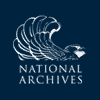General Orders, 1 August 1779
General Orders
Head-Quarters Moores-House [West Point]
Sunday Augt 1st 1779.
Parole Glocester— C. Signs Hampstead Ida.
The Honorable the Congress on the 5th of April last were pleased to pass the following resolve.
That the regimental clothiers have an allowance of thirty dollars pr month in addition to their present appointment.1
The board of General Officers appointed by the order of the 23rd ultimo, have reported that the rank & precedence of the regiments in the Massachusett’s line should stand as in the following arrangement, being founded on the seniority of the officers who first commanded them under the appointments made in consequence of the resolution of Congress of September 16th 1776.2
| Vose’s | 1st | Wesson’s | 9th |
| Bailey’s | 2nd | Marshall’s | 10th |
| Greaton’s | 3rd | Tupper’s | 11th |
| Shepard’s | 4th | Late Brewers | 12th |
| Putnam’s | 5th | —— Wigglesworth’s | 13th |
| Nixon’s | 6th | Bradford’s | 14th |
| Late Alden’s | 7th | Bigelow’s | 15th |
| Jackson’s | 8th |
The Commander in Chief approves the arrangement and the regiments henceforth are to rank and to be numbered accordingly.
The General being informed that a number of men have been left at New-Windsor and the neighborhood as baggage guards, directs that they be immediately withdrawn to join their regiments and that the baggage be either stored there or bro’t to the army; the former will be preferable; in either case, the Quarter Master General will give the necessary assistance.
Fatigue rum at the rate of a gill pr day pr man to be constantly issued to the different parties on fatigue and to the Artificers employed in carrying on the works; This to be delivered by the Issuing Commissary or Keeper of the Magazines on returns signed by the superintendents of the different works who are requested to be careful to prevent imposition.
The Commander in Chief directs that a General Officer of the day be appointed to attend to the police of the camp.
All officers are requested to be attentive to the appearance of any strangers at this post and to send all such as cannot give a good account of themselves and have not proper passes to the General of the day to be by him critically examined, and if not satisfied of their characters and business, he is to have them sent instantly away; on pain of punishment if they are afterwards found loitering about; or committed to the Provost if there are any circumstances of suspicion to justify it.3
Varick transcript, DLC:GW.
On this date Brig. Gen. Henry Knox sent to GW a signed return, dated at West Point, with an “Estimate of Ordnance and Stores taken from the Enemy at Stoney Point [N.Y.] the 16 July 1779—and received into the Magazines at West Point and the Park of Artillery.” The estimate listed each piece of artillery, the artillery ammunition and implements (fuses, sponges, rammers, ladles) for each type of cannon and mortar, and a wide array of other items of arms, ordnance, and equipment. The return gave the estimated value for each piece of artillery; the value of the ammunition and equipment for each type of artillery; and the individual value of all miscellaneous types of arms, ordnance, and equipment. Under the category “Brass Ordnance,” Knox listed one three-pounder, one light twelve-pounder, two heavy twelve-pounders, five mortars, and one eight-inch howitzer. Under the category “Iron Ordnance,” he listed one twelve-pounder, two eighteen-pounders, one twenty-four-pounder, and their “Carriages and beds.” The artillery ammunition he listed included 327 strap shot (round shot projectile strapped to a sabot) for cannon; 253 case shot (cannister or grape shot) for cannon, mortars, and howitzers; thirty langrage shot (a type of ammunition used against ship rigging) for twenty-four pound cannon; 758 flannel cartridges for mortars and howitzers; 145 shells for mortars and howitzers; 512 fuses for mortars and howitzers; fifteen carcasses (hollow projectiles filled with combustibles); and thirty-two “bags of shot.” The artillery implements Knox listed included three rammers, twenty-two sponges, eight powder ladles, and two “wormers” (worms). Among the other items of arms, ordnance, and equipment that Knox listed were 127 muskets with bayonets; 349 other muskets (198 damaged); 3,550 flints; 140 hand grenades; eighteen barrels of powder (four “damaged”); a various assortment of tools; and even one shaving knife. Knox also included the estimated value of the artillery ammunition expended against the British when the fort’s guns were turned on the fort at Verplanck Point and the British warship Vulture. Knox estimated the total value of all these items at $140,928 (DLC: GW). Congress authorized the distribution of the value of these captured stores to the soldiers participating in the attack on Stony Point (see 14:890–91; see also General Orders, 7 Aug., and GW to Anthony Wayne, 15 Aug.).
On 5 Aug., Knox submitted to GW the following supplemental signed report, also dated at West Point, on the value of items captured at Stony Point: “In addition to the ordnance and military stores I am desired to appraise 2 French Horns[,] 2 Bassoons[,] 2 Clarinets. The prices of these articles I am entirely unacquainted with but I have been assured that the Light Infantry have been offered one thousand dollars for them by some individuals, I do therefore appraise them at one thousand dollars” (DLC:GW).
1. For this resolution, see 13:422.
2. The orders refer to Congress’s resolution of that date raising eighty-eight battalions and apportioning quotas to the states (see 5:762–63).
3. A transcript of another orderly book from GW’s headquarters continues at this place, with orders reading: “All the field officers of the day and regimental officers of police are to pay very particular attention to this order” (NN: Bancroft Collection).

![University of Virginia Press [link will open in a new window] University of Virginia Press](/lib/media/rotunda-white-on-blue.png)
